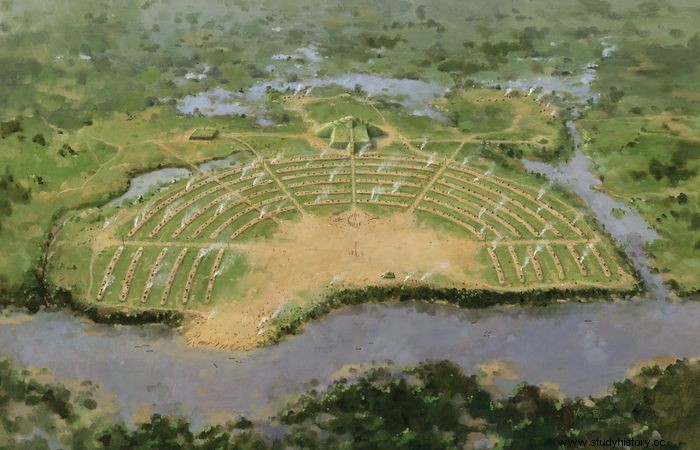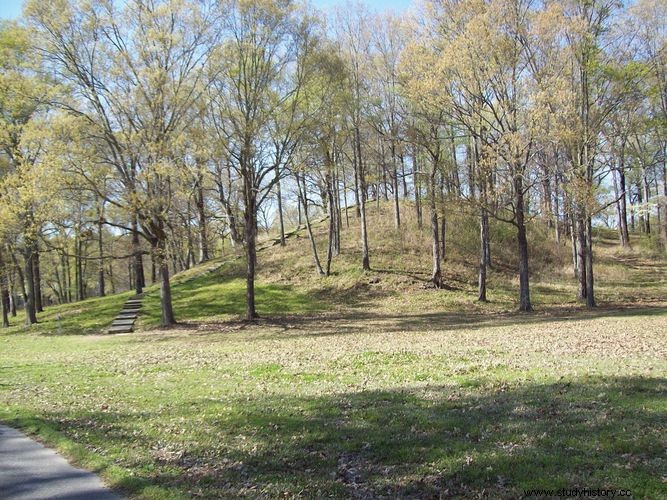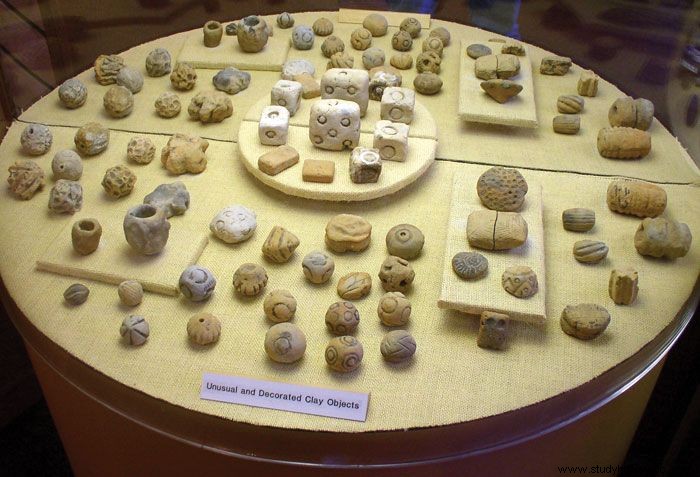Poverty Point National Monument , site of a prehistoric Native American city in northeast Louisiana , USA, about 80 km east of Monroe . It was designated a National Historic Landmark in 1962 designated and 1988 as national monument recognized . It is managed by the state of Louisiana as a Poverty Point State Historic Site. It occupies 1.4 square miles (3.7 square kilometers).

The memorial contains some of the largest mounds in North America . A town of 4,000 to 5,000 people flourished at Poverty Point between 1700 and 700 v . Chr . On . The central structure of the terrain consists of six concentric ridges of earth arranged in a horseshoe shape. It is believed that the ridges were foundations for residential areas. West of the ridges is Poverty Point Mound, a massive earthen effigy of a flying birds with a diameter of 210 meters and a height of 20 meters.

The precultural people who built the Mounds were a highly developed and well-adjusted society. Tools and vessels made from materials that go up to places like the Ohio River Valley traced, indicate a well-developed trading network. Unique Artifacts found on the site include thousands of handmade sound "stones" , for the Convection was used, around the Cooking .

